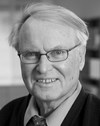We characterize pension systems along three dimensions: 1) actuarial vs. non-actuarial, 2) funded vs. pay-as-you-go, 3) defined-contribution vs. defined-benefit. Increasing the degree of actuarial fairness, by strengthening the linkage between contributions and benefits, reduces labor market distortions and may increase welfare in a Pareto-efficiency sense. Increasing the degree of funding implies mainly a redistribution of income among generations, although a partial shift to funding also provides better risk-return combinations for individuals. Shifting from defined-benefit to defined-contribution schemes (with fixed contribution rates) shifts the income risk from workers and taxpayers to pensioners.
Working Paper No. 580
The Gains from Pension Reform
Working Paper
Reference
Lindbeck, Assar and Mats Persson (2002). “The Gains from Pension Reform”. IFN Working Paper No. 580. Stockholm: Research Institute of Industrial Economics (IFN).
Lindbeck, Assar and Mats Persson (2002). “The Gains from Pension Reform”. IFN Working Paper No. 580. Stockholm: Research Institute of Industrial Economics (IFN).
Authors
Assar Lindbeck, Mats Persson

